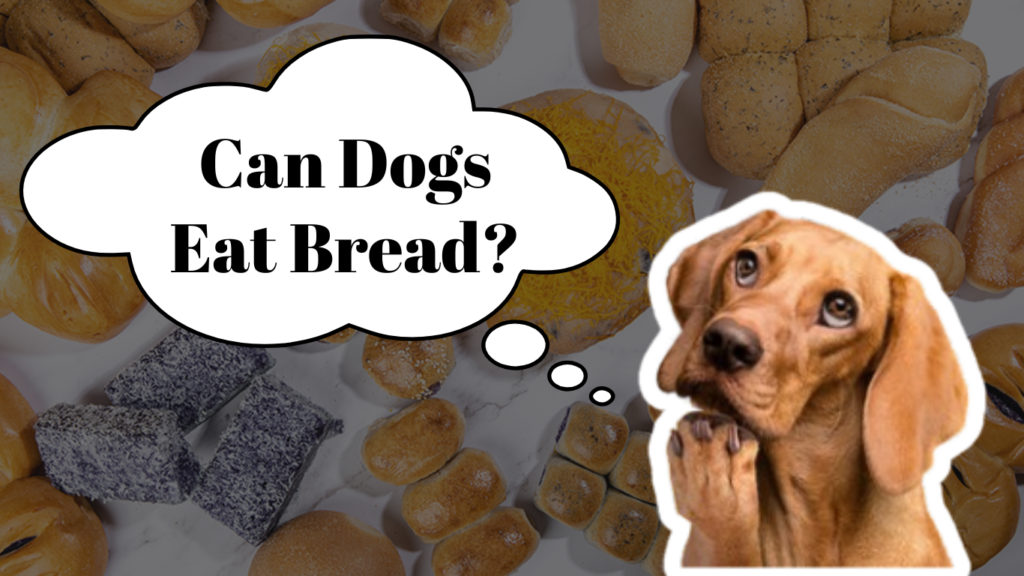Bread is a household staple loved by many, but when it comes to sharing a bite with your furry friend, you may wonder if it’s safe. The short answer is yes, dogs can eat bread in moderation, but there’s more to consider before making it a regular treat. Let’s dive into the details.
Is Bread Safe for Dogs?
Plain bread, made from simple ingredients like flour, water, yeast, and salt, is generally safe for dogs. However, it should only be given occasionally as a treat, not a dietary staple. Bread offers minimal nutritional value for dogs, and excessive consumption can lead to unwanted health issues like obesity or digestive upset.
Types of Bread to Watch Out For
Not all bread is safe for your dog. Here are some types to avoid:
- Garlic or Onion Bread
- These ingredients are highly toxic to dogs and can lead to serious health problems, including anemia.
- Raisin or Grape Bread
- Even a small number of raisins or grapes can cause kidney failure in dogs. Always avoid this type of bread.
- Sweetened Bread
- Breads containing chocolate, xylitol, or excessive sugar can harm your dog. Xylitol, in particular, is highly toxic and can cause hypoglycemia or liver damage.
- Bread with Nuts or Seeds
- Certain nuts, like macadamia nuts, are toxic to dogs. Seeds, especially those from fruits like apples or cherries, can contain harmful substances like cyanide.
- Gluten-Free Bread
- While gluten-free bread may seem like a safer option, many varieties contain artificial sweeteners or other additives that could harm your dog.
Potential Risks of Feeding Bread to Dogs
Feeding bread to your dog, even plain varieties, can carry risks:
- Weight Gain: Bread is high in carbohydrates and can lead to obesity if fed in excess.
- Digestive Issues: Some dogs may experience bloating, diarrhea, or constipation after eating bread.
- Food Allergies: Dogs with wheat or gluten allergies can develop itchy skin, ear infections, or gastrointestinal issues.
- Choking Hazard: Bread, especially when stale or in large chunks, can pose a choking risk, particularly for smaller breeds.
When Bread Can Be Beneficial
Surprisingly, bread can be helpful in certain situations:
- Absorbing Foreign Objects: If your dog swallows something mildly sharp, like small bone fragments, plain bread can help cushion the object and aid in its passage.
- Pill Administration: Hiding medication in small pieces of bread can make it easier for your dog to swallow.
- Calming Stomach Upsets: Plain bread can help absorb minor irritants in the stomach, though it’s not a substitute for veterinary care if the problem persists.
How Much Bread Can Dogs Eat?
Moderation is key. A small piece of bread (about the size of a bite-sized treat) is sufficient for most dogs. Puppies, senior dogs, or those with pre-existing health conditions should be fed bread only with the approval of a veterinarian.
Healthy Alternatives to Bread
If you’re looking for a treat that’s both safe and nutritious, consider these alternatives:
- Carrot Sticks: Low in calories and high in fiber and vitamins.
- Apple Slices: Remove the seeds to ensure safety, and offer a crunchy, sweet snack.
- Green Beans: Plain, cooked, or raw, they’re a great low-calorie treat.
- Plain, Cooked Pumpkin: Excellent for digestion and rich in nutrients.
- Banana Slices: Sweet and rich in potassium but serve sparingly due to natural sugars.
- Peanut Butter: A dog favorite—just ensure its xylitol-free.
What to Do If Your Dog Eats Harmful Bread
If your dog consumes bread with toxic ingredients (such as raisins, onions, or xylitol), act quickly:
- Identify the Bread Type: Determine what and how much your dog ate.
- Contact Your Veterinarian: Call your vet or an emergency animal hospital immediately.
- Watch for Symptoms: Look for vomiting, diarrhea, lethargy, or signs of poisoning like drooling, trembling, or seizures.
Prompt action can make all the difference in your dog’s recovery.
Frequently Asked Questions
Can Puppies Eat Bread?
Puppies can eat bread in small amounts, but their growing bodies need nutrient-rich food. Avoid feeding bread regularly and always opt for a balanced puppy diet.
Can Bread Cause Bloating in Dogs?
Yes, bread can cause bloating, especially if your dog eats a large amount or raw dough. Bloating can be dangerous and requires immediate veterinary attention.
Is Homemade Bread Better for Dogs?
Homemade bread can be a safer option as you control the ingredients. Avoid adding salt, sugar, butter, or spices, and always stick to plain recipes.
Key Takeaways
- Dogs can eat plain bread in moderation, but it shouldn’t replace a balanced diet.
- Avoid bread with harmful ingredients like raisins, garlic, or artificial sweeteners.
- Bread can be helpful for minor digestive issues or administering medication, but it should never be a dietary staple.
- Consult your vet if you’re unsure about feeding bread to your dog.
By being mindful of the types of bread and portion sizes, you can safely treat your dog while keeping them happy and healthy!
